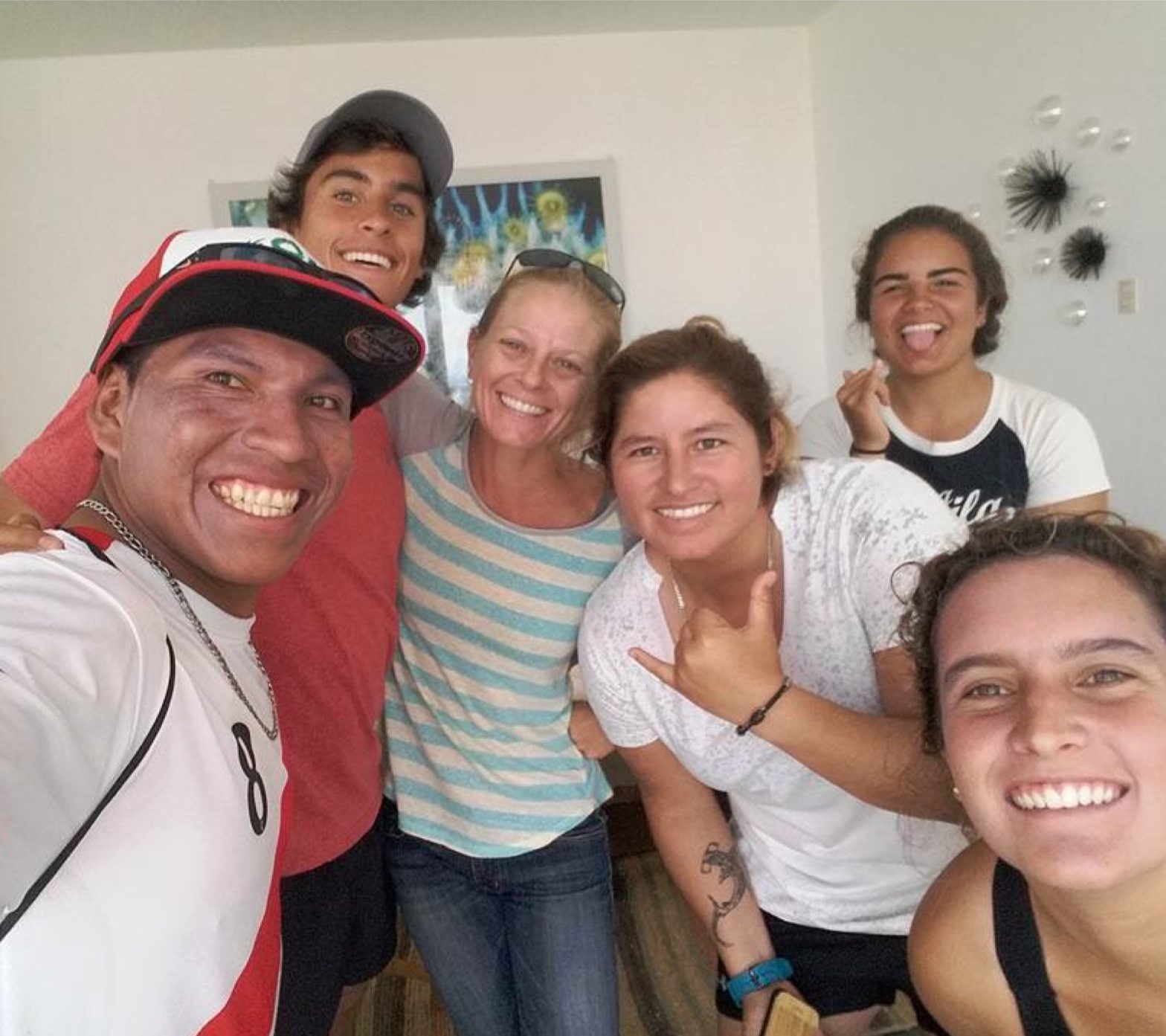Talk about a career highlight and an experience I will never forget! I wasn’t able to keep y’all updated as I was just too busy. At the end of each […]
Training is well underway!
So, if you’ve been following my stories on IG/FB you know that Peru is pretty awesome! The climate is very similar to that of the West Coast: cool and cloudy, but with more humidity.
¡Viva Perú!
Today is the day! This time tomorrow I’ll be in Lima, Peru beginning my 4-week journey as the longboard surf coach for the country’s national team.
Flux: Redefining Women’s Surfing
“Uniqueness is not something you can achieve by living up to what you see… Go inside, find your voice – not your brand – and begin the journey from there.” […]
Inspire Initiative Interview
There is often a great distance between people who point out the problems they see around them and those who actively work at solving them. The Inspire Initiative seeks to recognize and support those individuals and projects that are making a difference in the world around them, with the understanding that it takes a diversified collective of similar-minded, supportive and tenacious individuals to tackle what can feel like an endless sea of challenges and mind-numbing inertia.
We are honored to share with you our conversation with the founder and owner of The Surf Institute. She is an educator and surfer whose inspired and inspirational reach spans from Malibu to the Philippines, whose interests and mindful activism encompasses both environmental and social issues.
Evolving to the Next Level
Days in and days out, spending hours upon hours in the ocean sounds like a dream come true to most ocean enthusiasts. However, for me, after more than a decade […]
The Wall – Part Four
Today, on the site of the once fabled palapa, rests one of three county lifeguard towers whose lifeguards patrol the sand and ocean at Malibu Surfrider Beach. After numerous resident complaints of unauthorized and unpermitted “buildings” on the beach, the County of Los Angeles tore down the palm frond-thatched hut, a task that had to be accomplished a number of times as a select group of locals made numerous attempts at rebuilding it. Although the structure itself has since been gone for a number of consecutive years, the area is still referred to by the current sect of locals as the palapa and those who make the trek from the entrance of the wall down to the palapa area no longer have the same power and control as during those prime years throughout the 1990s. This perpetuation of title proved, however, that the reality and language manifested by the likes of Miki Dora were maintained throughout the years.
The Wall – Part Three
My earliest memories of the wall at Malibu go as far back to when I was still in diapers. Later, as a teenager, I become enthralled with surfing and began hanging at the infamous concrete barrier that was once meant to keep average-day citizens like myself off the formerly isolated, private beach. My dad was the first to educate me on the importance on how to earn my ‘rights’ out in the water. As my surfing skills began progressing, I remember him telling me things like, “Make sure you keep your hands down. You don’t want to be flailing them all around.” Or when I asked his advice on how to “hang five” he told me, “Well, whatever you do, don’t shuffle your feet up there, only kooks do that.”
The Wall – Part Two
Surfing at Malibu began somewhere between the 1920s and 1930s and was not generally a problem for the normally territorial woman. “Once they passed the tough and rigorous check-out [armed cowboys at the southern entrance to the ranch], they would head up the Pacific Coast Highway to the recently opened Rancho Malibu. The lads with their boards would crawl through a “friendly” hole in the fence at Malibu Potteries to hit the surf and paddle out to Malibu Point.” In the beginning, Mrs. Rindge’s efforts in keeping the pristine area private resulted in regularly empty beaches and surf lineups.
The Wall – Part One
Preceding the arrival of the Spanish explorer Juan Cabrillo, who set sail from Navidad, Mexico in June 1542, the coastal regions of California from San Luis Obispo to Malibu belonged to the Chumash, a Native American tribe who tended to build villages in favorable locations, one of which was known as, “Humaliwo,” a village in close proximity to the lagoon at the mouth of what is now called Malibu Creek. The word, “Humaliwo,” was recorded with the connotation of “where the surf sounds loudly.”[1] The city of Malibu now rests on acres upon acres of land originally awarded to early California settlers through Spanish land grants.









